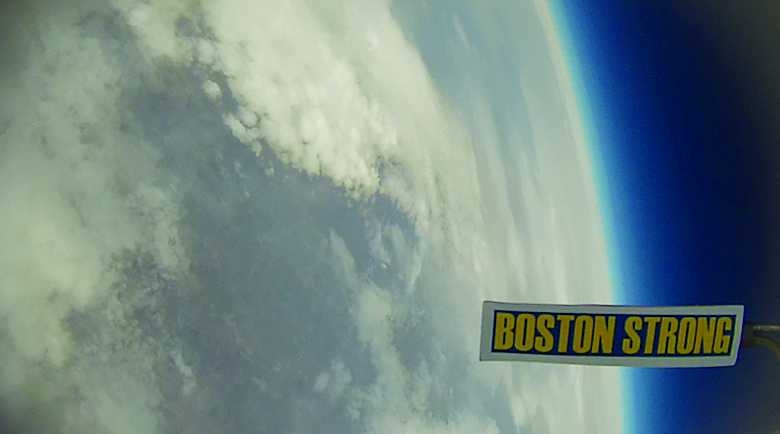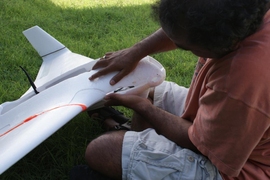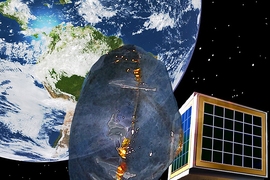In an international balloon competition founded, in part, by MIT AeroAstro students, more than 50 teams from 17 countries on six continents built high altitude balloons and launched them to the edge of space over the April 18-21 weekend. Teams included a wide range of age groups — from elementary school to university students. The Global Space Balloon Challenge’s goal is to get young people excited about science, technology, and innovation. Mission success.
AeroAstro graduate students Duncan Miller and Eddie Obropta, who led the MIT team, put a heartwarming spin on the launch by turning it into a special event fundraiser for the Massachusetts General Hospital Pediatric Cancer Center. The team compiled a care package of inspirational letters and commemorative mission patches that it gifted to the children after a successful trip to space and back. Thanks to donor support, more than $1,300 dollars has been directed to research initiatives and cancer care that enhances the quality of life for the hospital’s youngest cancer patients.
The MIT team launched its helium-field balloon from a farm in Cheshire, Mass. Leaving the ground the size of a car, the balloon expanded to the size of small house before popping at 80,000 feet. The payload container was equipped with an HD camera, an advanced avionics suite of GPS and radio communicators, and, considering this was Boston Marathon weekend, a Boston Strong banner.
A cadre of university professors and industry representatives are currently reviewing teams’ submissions and flight data. Judging criteria include best photograph, highest altitude, and best design.
MIT Team student participants included: Duncan Miller, Eddie Obropta, Gaurav Mukherjee, Devon Jedamski, Johannes Norheim, Forrest Meyen, Jinwook Lee, Sherrie Hall, Janelle Wellons, and Thomas Fronk.
MIT's Balloon Challenge organizers anticipate the competition will become an annual event.










